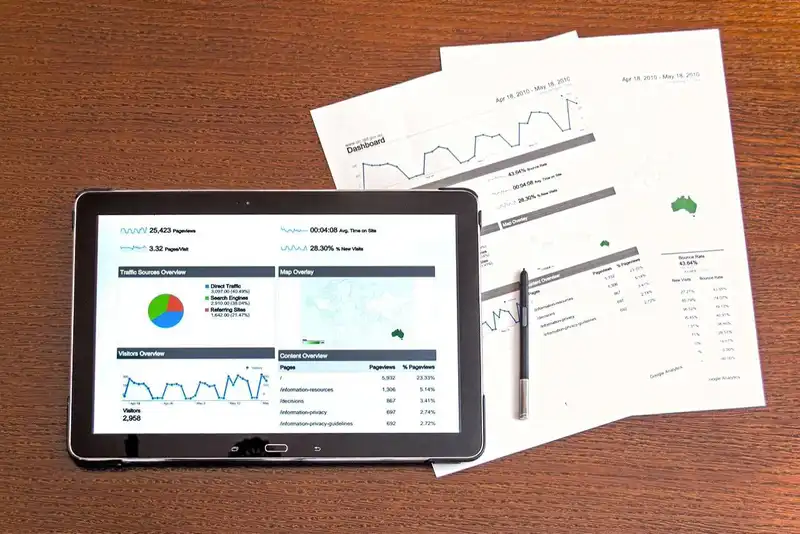How to Calculate Inventory Accuracy & 8 Factors That Affect It
The most significant responsibility that businesses have is fulfilling orders as quickly and efficiently as possible to retain customers and increase profits. However, this is not possible without an accurate view of inventory. Poor stock management could lead to stockouts, unhappy shoppers, and lost sales.
Therefore, organizations should actively update records to improve inventory accuracy and management.
What is Inventory Accuracy?

Inventory accuracy involves any discrepancy that exists between a company's stock records and physical counts. Businesses need accurate inventory data to ensure they maintain healthy stock levels, meet customer demands, and optimize internal systems.
Organizations with inaccurate inventory data can experience inflated stock expenses and lost sales from poor management.
To improve inventory accuracy, businesses must-
- Reconcile inventory records
- Perform routine physical counts
- Based records on available inventory after shipments, sales, and deliveries
In order to calculate inventory accuracy, businesses need to-
- Determine the number of sampled inventory items
- Determine the number of total inventory items
Inventory Accuracy = Number of Sampled Inventory Items / Total Number of Inventory Items
Managers must be sure to carefully calculate the two values in the equation, for if one is incorrect, the quotient cannot be used.
8 Factors that Affect Inventory Accuracy

Inventory accuracy ensures customers receive their orders how and when they want them, without exceeding the company's budget. With inaccurate inventory records, businesses may find specific products are out of stock, creating backorders, or even losing sales.
By understanding the different factors that impact inventory accuracy, organizations can optimize their operations to prevent inaccuracies.
Physical Inventory
Businesses must perform a physical inventory to determine exactly how much product they have on-hand. Otherwise, managers may never know if the quantities they have on record are accurate.
Companies can take physical inventory with a floor-to-sheet count, which compares the actual number of units to what is filed in the management system. Managers can also conduct a sheet-to-floor count, starting at the inventory system and then determining how much physical stock is on-hand.
Regardless of which method a business uses, they must double-check each quantity, for if one number is off, the entire report is erroneous.
Regular Routines

Companies need to perform a physical count on their inventory every two months, using the previous count as a baseline. Stock managers should also collect the receipts, shipments, and invoices to estimate the products they should have on-hand.
With each cycle, organizations can slowly reconcile their inventory to improve accuracy.
Cycle Counts
While physical counts are necessary, it isn't reasonable to perform manual inventory every day.
With cycle counts, businesses can focus on different products every day until all stock has been accounted for.
By using cycle counts to inventory products intermittently rather than all at once, companies can save time and labor costs. Organizations can also avoid having to stop operations to tally the entire warehouse.
There are many different types of cycle counts that businesses can employ, depending on their type of inventory. Companies can categorize their stock based on volume, profit margin, or customer demand to ensure the most critical products remain the top priority.
Naming Conventions

Many inventory inaccuracies result from poor naming conventions that create misinterpretation. For example, products that are identified with a line of digits and letters can cause some confusion regarding the numbers zero and one as they are often confused with O and I.
Businesses should use automated tools, such as barcode scanners, to avoid errors related to mistypes. However, there are still some cases where employees may need to manually enter an item's identification number due to a system malfunction. Therefore, companies should avoid using a zero, one, "O," or "I" when assigning codes.
Inventory Management Software
Inventory management software helps businesses manage their warehouse by orchestrating cycle counts, delivery acceptance, and product transferals.
An advanced inventory system can locate items throughout the supply chain, allowing managers to coordinate shipments and transfer units between locations. It also creates a centralized interface where employees can look up product variances.
Having an inventory solution makes counting products as easy as scanning barcodes and verifying counts, reducing the risk of human error. By improving visibility into the supply chain and stock, businesses can improve their inventory accuracy.
Process-Driven Systems

In order to maintain inventory accuracy, companies must keep a process-driven management system. This means that every request should improve the system's responsiveness and capabilities in case it receives a similar order in the future.
For example, if a potential customer wants to sample a product, managers need to mark this transaction in the management system. This way, the stock quantities remain up-to-date, and the business can streamline future sample requests. Otherwise, unconventional requests like this can slowly increase inaccuracies.
Secure Inventory
Different types of inventory call for different security measures. For example, small, easily misplaced items should be stored in a well-organized space that can be locked to prevent theft. Similarly, expensive items, such as electronics, should be kept under lock and key until the final purchase.
On the other hand, heavy products, such as equipment and vehicles, may not need to be so heavily guarded.
Units of Measurement
Another common inventory error is forgetting to standardize units of measurement throughout product lines. This can lead to miscalculations when configuring balance and expense sheets.
For example, products can be counted by volume, weight, length, and even dozens.






